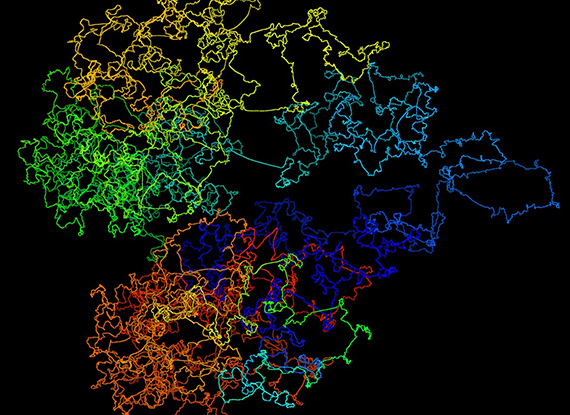Science has already allowed us to map the human genome – one of the biggest scientific achievements of our lifetimes.
But to really take that achievement to the next level and use it to improve precision health and medicine, we need accurate 3D models to study chromosomes in great detail.
A Mizzou Engineering researcher and his team have designed a tool to do just that.
Jianlin Cheng, MU William and Nancy Thompson Professor of Electrical Engineering & Computer Science, and co-authors Tuan Trieu and Oluwatosin Oluwadare recently published “Hierarchical Reconstruction of High-Resolution 3D Models of Large Chromosomes,” in Scientific Reports.
“DNA is the code of life for all living systems, including people,” Cheng explained. “Our tool can help scientists view specific genes and study their interactions in the 3D space, which could help identify factors leading to — and treatment for — various cancers, diseases or disorders.”
They utilized data from the existing genomic sequence and created an algorithm that allowed them to model human DNA in three dimensions. The goal is to help scientists and clinicians better detect differences between healthy and cancerous cells to allow for more advanced detection of cancer. In addition, cells with noted malfunctions can also be markers for diabetes, Alzheimer’s and more.
The structure of the genome within cells can predict their function, as Cheng and his team have illustrated previously. This includes structures that can potentially have adverse effects on a person’s health.
Being able to understand the genome structures in their cells and predict potential problems can help deliver personalized, precision health improvements in a given patient. This is why research such as Cheng’s will be a key part of the UM System’s NextGen Precision Health Initiative, which will help advance personalized medicine and deliver customized patient care based on an individual’s genes, environment and lifestyle.
“Gene interactions are essential for our bodies to function,” Cheng said. “By visualizing the genes in 3D, and at high-definition, scientists can better visualize these interactions and study long-range interactions that we couldn’t see before. For example, right now scientists might not see the interaction between gene X and gene Y that are located far away on the linear genome sequence, but with this new tool, we can see these two genes are spatially close to each other because of a process called folding. When the folding malfunctions, it can cause adverse issues, such as diabetes or Alzheimer’s disease.”
